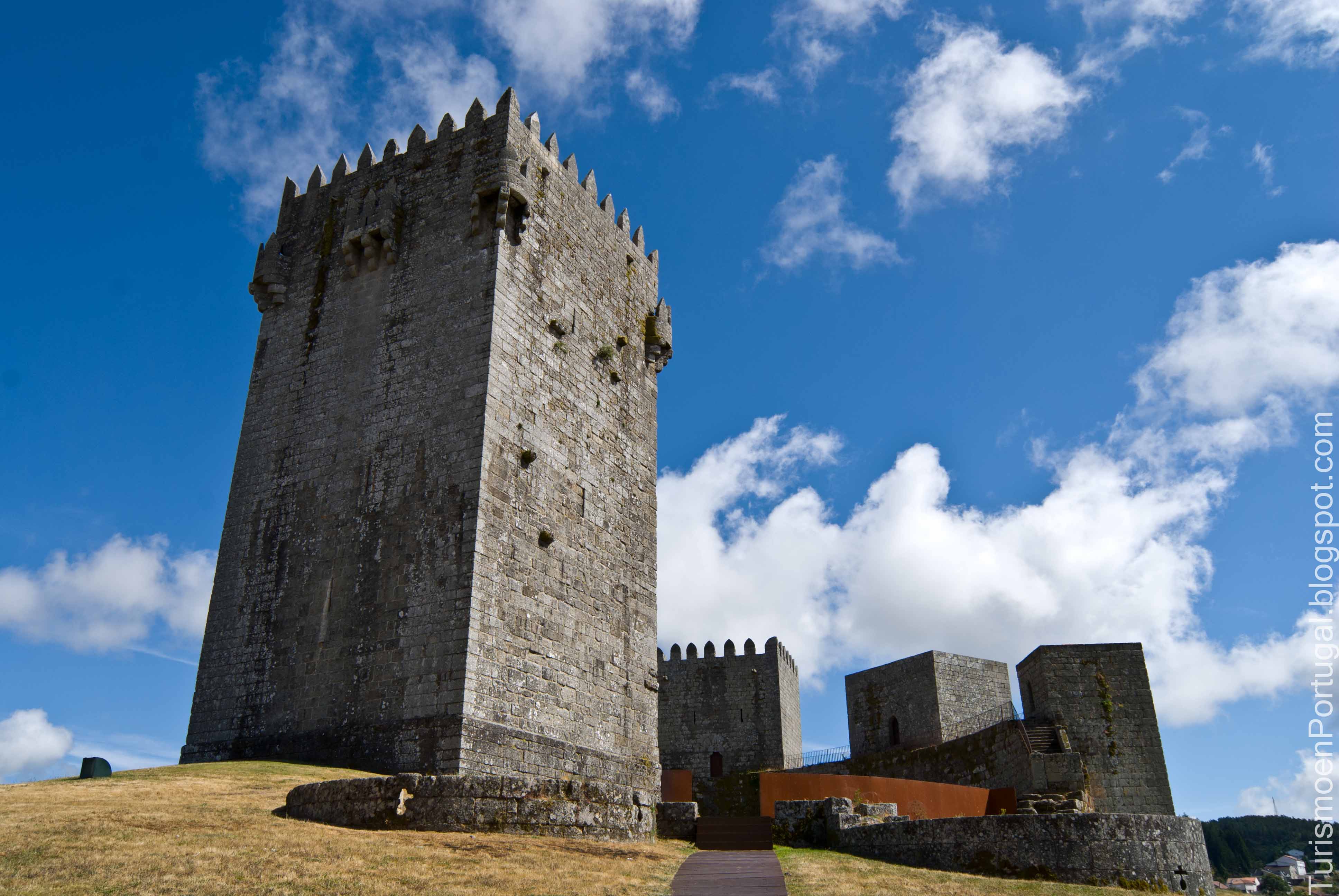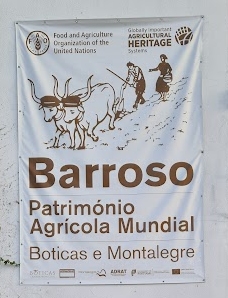|
Montalegre
Montalegre (), officially the Town of Montalegre (), is a municipality in northern Portugal, located in the district of Vila Real, along the border with Spain. The population in 2011 was 10,537, in an area of 805.46 km². History Early construction in Montalegre date back 3500–4000 years when early inhabitants, around the villages of Mourela, Veiga and Vila da Ponte, buried their dead in funeral mounds. Vestiges of this culture predominate the region, and suggest that settlements have been ongoing since the Metal Ages. Celt colonies began to appear afterward, constructing castros in many of the places that developed into formal settlements. With the arrival of the Romans, bridges and formal roads began to appear, while many of the castros began to be converted into Roman encampments, later the nuclei of formalized settlements. Remains of the Roman civitas are still common: ''Praesidium'' (in Vila da Ponte, popularly known as ''Sabaraz'') and ''Caladunum'' (in Cervos). ... [...More Info...] [...Related Items...] OR: [Wikipedia] [Google] [Baidu] |
Montalegre Municipal Chamber
The Montalegre Municipal Chamber () is the administrative authority in the municipality of Montalegre. It has 25 freguesias in its area of jurisdiction and is based in the town of Montalegre, on the Vila Real District. These freguesias are: Cabril (Montalegre), Cabril; Cambeses do Rio, Donões e Mourilhe; Cervos (Montalegre), Cervos; Chã; Covelo do Gerês; Ferral; Gralhas; Meixedo e Padornelos; Montalegre e Padroso; Morgade; Negrões; Outeiro (Montalegre), Outeiro; Paradela, Contim e Fiães; Pitões das Júnias; Reigoso (Montalegre), Reigoso; Salto (Montalegre), Salto; Santo André (Montalegre), Santo André; Sarraquinhos; Sezelhe e Covelães; Solveira; Tourém; Venda Nova e Pondras; Viade de Baixo e Fervidelas; Vila da Ponte (Montalegre), Vila da Ponte and Vilar de Perdizes e Meixide. The Montalegre City Council is made up of 7 councillors, representing, currently, two different political forces. The first candidate on the list with the most votes in a municipal election or, i ... [...More Info...] [...Related Items...] OR: [Wikipedia] [Google] [Baidu] |
Castelo De Montalegre
{{portugal-castle-stub ...
The Montalegre Castle is a Portuguese medieval castle and National monument in Montalegre, Vila Real. Castelo de Montalegre 2020 25.jpg Aerial photographs of Castelo de Montalegre (1).jpg Castelo de Montalegre - Portugal (11024635733).jpg External linksMontalegre Castleat IPPAR Buildings and structures in Montalegre Montalegre Montalegre Montalegre (), officially the Town of Montalegre (), is a municipality in northern Portugal, located in the district of Vila Real, along the border with Spain. The population in 2011 was 10,537, in an area of 805.46 km². History Early con ... [...More Info...] [...Related Items...] OR: [Wikipedia] [Google] [Baidu] |
Boticas Municipality
Boticas () is a municipality in northern Portugal. The population in 2011 was 5,750,Instituto Nacional de Estatística in an area of 321.96 km2. History One of the symbols of Boticas is the Galaico Warrior, an anthropomorphic carved monolith (found in the 17th century) in the castro of Lesenho, at an altitude of 1075 metres, under fields of the parish of São Salvador de Viveiro and the municipality of Boticas, considered the most important |
Vila Real District
The District of Vila Real ( ) is a district of northern Portugal. With an area of , the district is located east of the port city of Porto and north of the Douro, Douro River. Vila Real has always belonged to the historical province of Trás-os-Montes Province, Trás-os-Montes. It is bordered by Spain (Galicia (Spain), Galicia) in the north and east, Braga District and Porto District in the west, Viseu District in the south and Bragança District in the east. Approximate population in the 2001 census was 230,000. The population has shown negative rates in recent years due to emigration and aging. Many of the villages have lost population and have become deserted, while the Vila Real, namesake district capital has gained in population. Geographic and socioeconomic characteristics Vila Real is a rugged area of low mountains and narrow valleys. Historically it had always been cut off from the coast by the Marão, Gerês, and Cabreira mountains until a highway was cut through ... [...More Info...] [...Related Items...] OR: [Wikipedia] [Google] [Baidu] |
Alto Tâmega
The Comunidade Intermunicipal do Alto Tâmega () is an administrative division in northern Portugal Portugal, officially the Portuguese Republic, is a country on the Iberian Peninsula in Southwestern Europe. Featuring Cabo da Roca, the westernmost point in continental Europe, Portugal borders Spain to its north and east, with which it share .... It was created in 2014. Since January 2015, Alto Tâmega is also a NUTS3 subregion of Norte Region, that covers the same area as the intermunicipal community. [...More Info...] [...Related Items...] OR: [Wikipedia] [Google] [Baidu] |
Barroso (region)
Barroso or Terras de Barroso (''Lands of Barroso'') is the traditional name of the region formed by the Portuguese municipalities of Montalegre and Boticas. The Terras de Barroso existed as an administrative division of Portugal from 1273 to 1876, and the term "Barroso" and "Barrosã/Barrosão" (adjective) continue to be widely used to refer to the distinctive and isolated heritage, culture and landscape of this area. The region was one of the first in Europe, in 2018, to be recognised by the United Nations Food and Agriculture Organisation as a 'Globally Important Agricultural Heritage System.' The stocky Barrosã The Barrosã is a cattle breed from Portugal. The Barrosã breed has the protected geographical status of DOC (''Denominação de Origem Controlada'') from the European Commission The European Commission (EC) is the primary Executive (govern ... cattle with long curved horns are farmed across the North of Portugal and have been extensively studied because of th ... [...More Info...] [...Related Items...] OR: [Wikipedia] [Google] [Baidu] |
Afonso IV Of Portugal
Afonso IVEnglish: ''Alphonzo'' or ''Alphonse'', or ''Affonso'' (Archaic Portuguese), ''Alfonso'' or ''Alphonso'' ( Portuguese-Galician) or ''Alphonsus'' (Latin). (; 8 February 129128 May 1357), called the Brave (), was King of Portugal from 1325 until his death in 1357. He was the only legitimate son of King Denis of Portugal and Elizabeth of Aragon. Early life Afonso, born in Lisbon, was the rightful heir to the Portuguese throne. However, he was not Denis' favourite son, even nearly beginning conflict against him. Instead, the old king preferred his illegitimate son, Afonso Sanches. The notorious rivalry between the half-brothers led to civil war several times. On 7 January 1325, Afonso IV's father died and he became king, whereupon he exiled his rival, Afonso Sanches, to Castile, and stripped him of all the lands and fiefdom given by their father. From Castile, Afonso Sanches orchestrated a series of attempts to usurp the crown. After a few failed attempts at invasion, th ... [...More Info...] [...Related Items...] OR: [Wikipedia] [Google] [Baidu] |
John II Of Portugal
John II (; ; 3 May 1455 – 25 October 1495), called the Perfect Prince (), was King of Portugal from 1481 until his death in 1495, and also for a brief time in 1477. He is known for reestablishing the power of the Portuguese monarchy, reinvigorating the economy of Portugal, and renewing the Portuguese exploration of Africa and Asia. Early life Born in Lisbon on 3 May 1455, John was the second son of Afonso V of Portugal and Isabella of Coimbra. At one month old, on 25 June 1455, he was declared legitimate heir to the crown and received an oath of allegiance from the three estates. In 1468, Afonso V and Henry IV of Castile attempted to arrange a double marriage in which John would marry Henry's daughter, Joanna, and Afonso would marry Henry's half-sister and heir-presumptive, Isabella of Castile. However, Isabella refused to consent to the arrangement. Instead, John married Eleanor of Viseu, his first cousin and the eldest daughter of Ferdinand, Duke of Viseu, on 22 Janu ... [...More Info...] [...Related Items...] OR: [Wikipedia] [Google] [Baidu] |
Manuel I Of Portugal
Manuel I (; 31 May 146913 December 1521), known as the Fortunate (), was King of Portugal from 1495 to 1521. A member of the House of Aviz, Manuel was Duke of Beja and Viseu prior to succeeding his cousin, John II of Portugal, as monarch. Manuel ruled over a period of intensive expansion of the Portuguese Empire owing to the numerous Portuguese discoveries made during his reign. His sponsorship of Vasco da Gama led to the Portuguese discovery of the sea route to India in 1498, resulting in the creation of the Portuguese India Armadas, which guaranteed Portugal's monopoly on the spice trade. Manuel began the Portuguese colonization of the Americas and Portuguese India, and oversaw the establishment of a vast trade empire across Africa and Asia. Manuel established the Casa da Índia, a royal institution that managed Portugal's monopolies and its imperial expansion. He financed numerous famed Portuguese navigators, including Pedro Álvares Cabral (who discovered Brazil), ... [...More Info...] [...Related Items...] OR: [Wikipedia] [Google] [Baidu] |
Nuno Álvares Pereira
'' Dom'' Nuno Álvares Pereira, OCarm (; 24 June 1360 – 1 November 1431) was a very successful Portuguese general who had a decisive role in the 1383–1385 Crisis that assured Portugal's independence from Castile. He later became a mystic and was beatified by Pope Benedict XV in 1918, and canonised by Pope Benedict XVI in 2009. Nuno Álvares Pereira is often referred to as the Saint Constable () or as Saint Nuno of Saint Mary (), his religious name. He was count of Barcelos, Ourém and Arraiolos. Family Nuno Álvares Pereira was born on 24 June 1360 in Cernache do Bonjardim, central Portugal, the illegitimate son of Dom Álvaro Gonçalves Pereira, prior of Crato and Iria Gonçalves do Carvalhal. His grandfather was Dom Gonçalo Pereira, the archbishop of Braga from 1326 until 1349. He was descended from the oldest Portuguese and Galician nobility. About a year after his birth, the child was legitimised by royal decree and so he was able to receive a knig ... [...More Info...] [...Related Items...] OR: [Wikipedia] [Google] [Baidu] |

